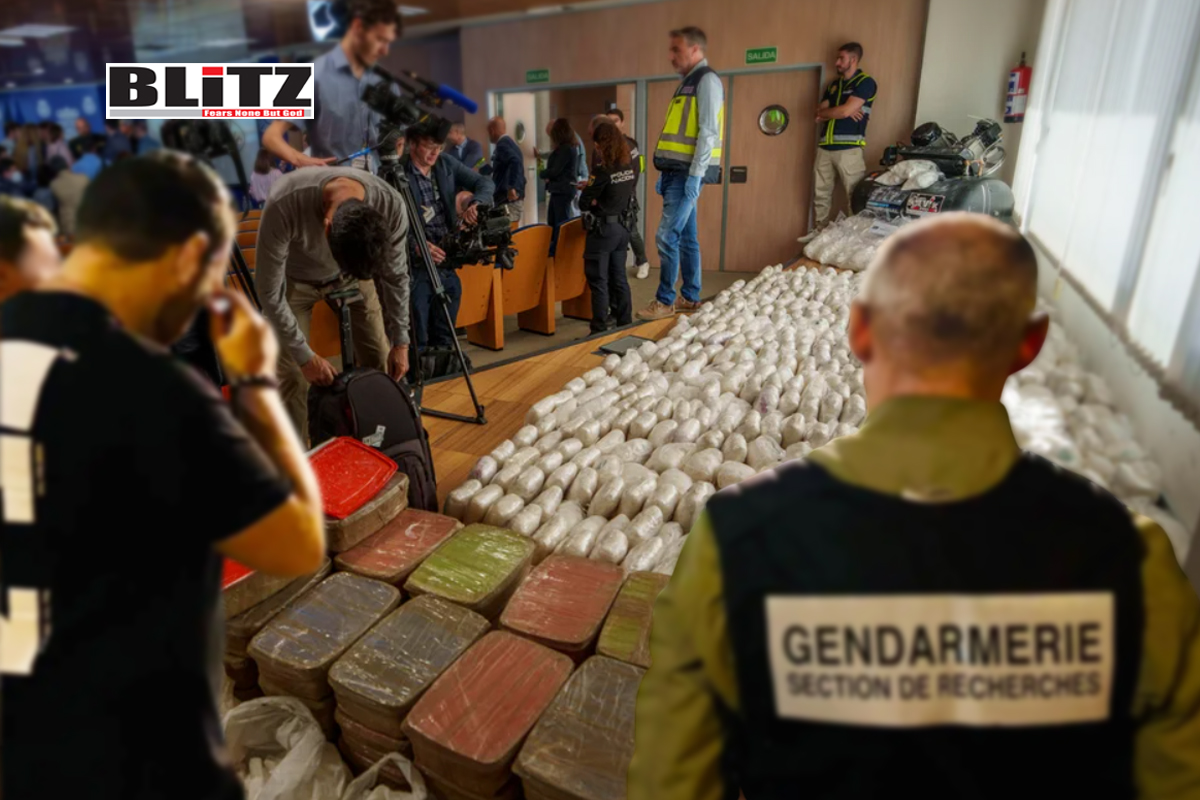European authorities dismantle major meth network linked to Mexico’s Sinaloa cartel
A vast transnational drug trafficking network with suspected ties to Mexico’s notorious Sinaloa cartel has been dismantled by European law enforcement agencies in a major international operation. The bust, led by the French National Gendarmerie and supported by Belgian police and Europol, reveals the deepening relationship between Mexican drug cartels and European criminal organizations-and underscores the shifting geography of global synthetic drug production.
The operation culminated in a series of raids on May 19 across France and Belgium, leading to the arrest of 16 individuals, including one Mexican-American national, and the seizure of significant assets and contraband. Authorities recovered more than 200 kilograms of crystal meth over the course of the investigation, alongside €40,000 in cash and cryptocurrency, €80,000 in frozen bank accounts, and luxury goods valued at approximately €100,000. Electronic devices and three vehicles were also confiscated.
According to a statement by Europol on May 28, the dismantled network had extensive operations throughout Europe and even extended as far as New Zealand. Investigators identified two key ringleaders-a French national and an Algerian national-who allegedly coordinated a sophisticated production and trafficking scheme that imported chemical precursors from China, produced meth in EU-based clandestine laboratories, and distributed the finished product across multiple continents.
The investigation, launched after a June 2023 seizure of 216 kilograms of methamphetamine in France, highlights the alarming growth of synthetic drug production in Europe. That single bust, which netted two suspects, exposed the broader infrastructure behind the network and prompted deeper collaboration between European agencies and international partners.
Europol officials described the network as an example of “next-generation” criminal cooperation, merging the production expertise and smuggling logistics of Latin American cartels with the distribution capabilities and localized knowledge of European gangs. The Sinaloa cartel, one of the most powerful drug trafficking organizations in the world, is believed to have provided critical know-how and operational support for the production of methamphetamine, while relying on European gangs to manage laboratories, secure chemical precursors, and handle street-level distribution.
This kind of transatlantic criminal alliance is no longer unusual. A 2022 joint report from Europol and the US Drug Enforcement Administration (DEA) warned of the growing involvement of Mexican cartels in Europe’s drug trade, particularly in the domains of meth and cocaine production. The report noted that Mexican operatives had begun supporting lab construction and providing synthetic drug recipes, essentially franchising their operations across borders.
The current investigation confirms those fears. The suspects are believed to have established synthetic drug laboratories in undisclosed locations in France and possibly other EU states. Authorities uncovered one such abandoned lab site, with visible evidence of meth production and improper chemical disposal. Discarded containers, buried waste, and other signs of environmental negligence reveal a disturbing effort to mask the ecological damage caused by these operations.
The scale and sophistication of the group’s operations suggest more than just a traditional drug trafficking ring. Investigators found that the network had deeply embedded itself into the financial systems of Europe, using cryptocurrency to launder profits and concealing transactions through shell accounts and digital wallets. This enabled the organization to obscure its funding trail, maintain operational secrecy, and reinvest proceeds back into the drug trade.
“The group wasn’t just producing and selling drugs-they were running a full-service criminal enterprise with logistics, financial laundering, and international supply chains,” a Europol analyst noted. “The use of cryptocurrencies and their integration into legitimate business structures show how far these organizations have evolved.”
Indeed, this blending of illegal and legal economies is becoming a central challenge for law enforcement agencies across the EU. The 2025 edition of the Serious and Organized Crime Threat Assessment (SOCTA), released earlier this year, emphasized the increasing infiltration of legitimate sectors by organized crime. From real estate to shipping to chemicals, criminal groups are finding new avenues to mask their activities and bolster their operations.
Unlike traditional narcotics such as heroin or cocaine, synthetic drugs like methamphetamine are easier to manufacture in localized laboratories, making them especially appealing to organized crime. As the cost and risk of international smuggling rise, cartels and their European partners are increasingly turning to domestic production to cut overhead and evade detection.
The EU has seen a notable increase in synthetic drug labs over the past five years. Once concentrated in the Netherlands and Belgium, meth labs are now appearing in a wider array of countries, including France, Spain, and Germany. With this expansion has come a rise in turf wars, violence, and environmental degradation.
New Zealand, which has also been linked to the dismantled network, has emerged as a surprising hotspot in this global equation. The Pacific nation has long struggled with domestic methamphetamine abuse, and recent years have seen a surge in imports from international crime syndicates. The involvement of European-based production facilities adds a new layer to that challenge.
The scale of the dismantled operation should serve as a wake-up call for European policymakers and law enforcement agencies. The growing footprint of Mexican cartels in the EU represents a direct challenge to the bloc’s public health, economic integrity, and border security.
While the arrests made in May mark a significant victory, experts warn that the dismantling of one network will not eliminate the threat. The demand for synthetic drugs remains high, and the decentralized nature of lab production makes it difficult to root out all operations.
“The Sinaloa cartel and others like it are agile, adaptive, and opportunistic,” said a former DEA official familiar with Latin American trafficking patterns. “As long as there’s demand and profit to be made, they’ll keep trying to exploit weak links across the globe.”
For now, though, authorities are celebrating a major step forward. Europol emphasized that continued international cooperation will be essential to tackling what is clearly a global criminal enterprise. With synthetic drugs reshaping the contours of the global drug trade, Europe finds itself at the frontline of a new, more complex battle.
Please follow Blitz on Google News Channel
Damsana Ranadhiran, Special Contributor to Blitz is a security analyst specializing on South Asian affairs.
european-authorities-dismantle-major-meth-network-linked-to-mexicos-sinaloa-cartel















Leave a Reply